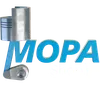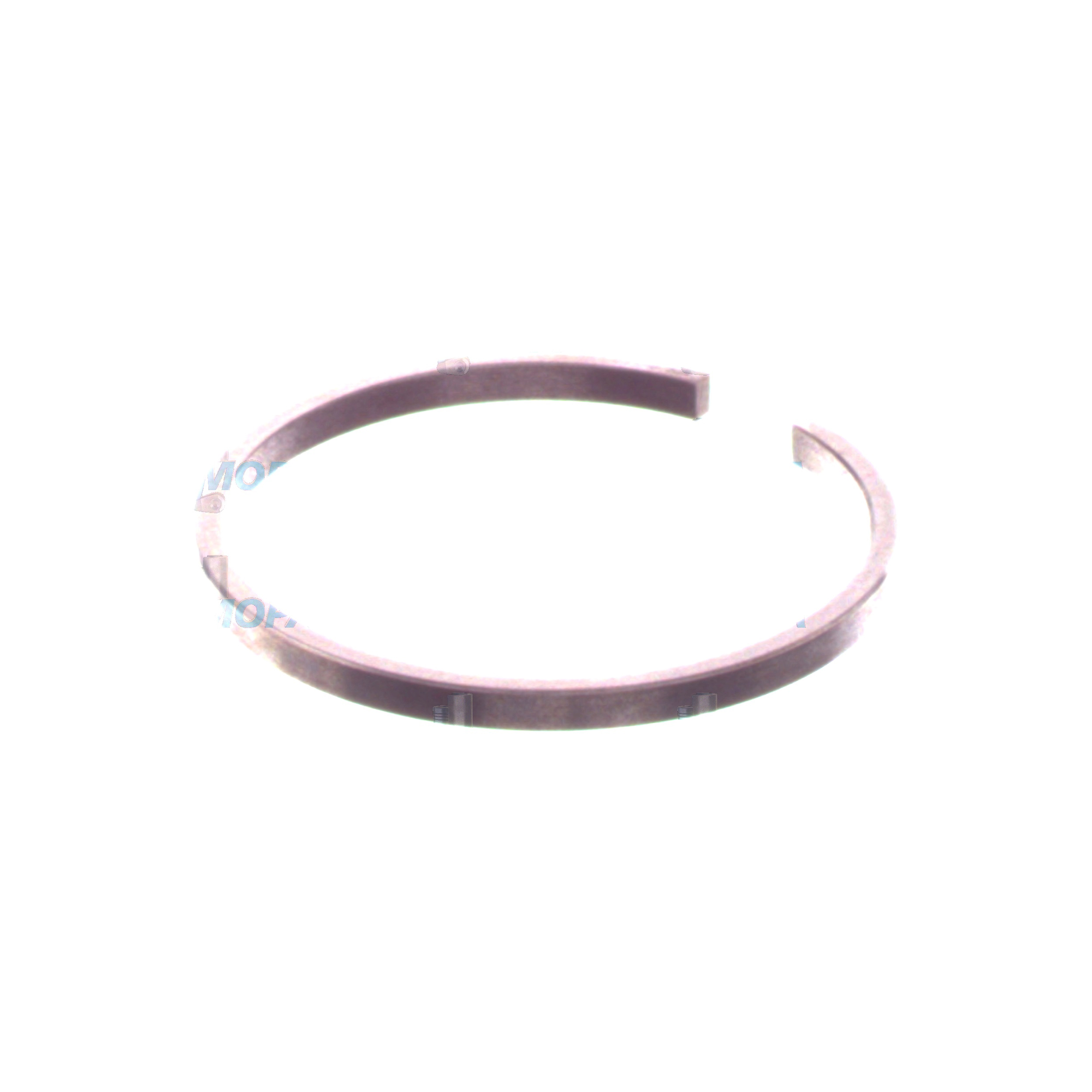PISTON RING solutions for Piston rings in high-performance diesel and marine engines
Piston rings are precision-engineered sealing and control elements installed in grooves on the piston. As a critical interface between piston and cylinder liner, they enable the core thermodynamic processes that make engines work. In heavy-duty diesel engine and marine engine applications, piston rings maintain compression, control lubricating oil, and transfer heat—functions that directly influence power output, fuel efficiency, emissions, and the service life of the power unit. The article category “Piston rings” covers complete ring packs as well as individual compression, scraper, and oil-control rings for four-stroke and two-stroke engines across a wide range of bores.
Modern ring designs combine robust base materials with advanced surface treatments to withstand high pressures, elevated temperatures, abrasive soot, and corrosive exhaust components. Whether you manage a coastal vessel, a deep-sea carrier, or industrial power generation, the right PISTON RING configuration is essential to stabilizing combustion, protecting the liner, and keeping operating costs predictable.
Technical function of PISTON RING in a diesel engine or marine engine
A PISTON RING provides three primary functions: gas sealing, oil regulation, and heat transfer. Gas sealing minimizes blow-by by maintaining a dynamic seal between the ring face and the cylinder liner. This seal forms as the ring’s inherent tension presses it outward while combustion pressure gets behind the ring via the ring gap and back clearance, pushing the ring face firmly against the liner. Properly profiled ring faces—barrel, taper, or keystone—maintain a stable hydrodynamic film, reducing wear while ensuring tight compression. In a diesel engine, effective sealing results in higher peak cylinder pressure, cleaner combustion, and improved specific fuel consumption.
Oil regulation is managed mainly by the scraper and oil-control rings. These rings meter the correct oil film, returning excess oil through drain-back holes to prevent carryover into the combustion chamber. This limits carbon deposits, lowers particulate formation, and protects aftertreatment systems. In a marine engine that runs long duty cycles, stable oil control reduces fouling of turbocharger components and prevents liner polishing.
Heat transfer is the third key task. A PISTON RING conducts heat from the piston crown and ring land into the cylinder liner, which then dissipates it via the coolant. Effective heat flow reduces localized hot spots, mitigates detonation risk in gas engines, and prevents ring micro-welding or scuffing. Material choice—nodular iron or steel—and coatings such as chromium, molybdenum, or PVD layers are matched to fuel type, liner hardness, and lubrication strategy.
Dimensional precision is fundamental: correct ring end gap, side clearance in the ring groove, and ring tension ensure rapid bedding-in after overhaul and protect the liner’s crosshatch. PISTON RING OEM parts are engineered to the piston and liner geometry so that ring movement (twist and conformability) remains within design limits across the full load range.
- · Reliable gas sealing for high compression stability
- · Controlled oil film to minimize consumption and deposits
- · Efficient heat transfer from piston to liner
- · Optimized ring face profiles for reduced wear
- · Material and coating options for diesel and gas duty
- · Precise end gap and side clearance to protect liners
- · Compatibility with large-bore marine engine requirements
- · Engineered synergy within the complete ring pack
PISTON RING design details that drive performance
Compression rings typically feature barrel or keystone profiles to maintain contact under varying loads and to resist deposit-induced sticking. Scraper rings use taper or Napier profiles to shear excess oil, while multi-piece oil-control rings stabilize oil return and resist flutter at high speed. For slow-speed marine engines, ring pins and anti-rotation features ensure ring gap positioning relative to ports. The interplay between ring pack design, liner honing, and lubricant additive package defines wear rate, blow-by levels, and start-up reliability.
Why PISTON RING condition is critical for reliability and service life
Degraded piston rings compromise every core engine KPI. Excessive wear or stuck rings raise blow-by, reduce effective compression, and force higher fuel burn to achieve the same power. Poor oil control elevates oil consumption, causes ash deposits on exhaust valves and turbocharger turbine blades, and accelerates DPF or SCR maintenance. Liner scuffing and glazing can follow, increasing metal-to-metal contact and shortening overhaul intervals.
In severe cases, broken rings or hammered ring lands lead to catastrophic damage—scored liners, damaged pistons, and collateral failures that extend downtime. For marine operators, uncontrolled blow-by increases crankcase vapors and the risk of hot spots. Routine monitoring via compression tests, in-line pressure analysis, oil condition trending (iron, chrome, and insolubles), and endoscopic inspections helps detect early ring-pack distress. Maintaining correct ring specs and replacing at defined intervals preserves stable combustion, lowers emissions, and protects the investment in the piston–liner system.
Advantages of OEM spare parts suitable for Piston rings
OEM spare parts for piston rings align ring geometry, metallurgy, and coatings with the intended piston grooves and cylinder liners. That fit-for-design approach is essential for performance, reliability, budget control, and long service life. Dimensional fidelity ensures the right side clearance and back clearance, delivering fast seating after overhaul and minimizing initial blow-by. Consistent ring tension and face profile protect the liner’s plateau finish and reduce oil consumption across the duty cycle.
Traceable materials and validated coatings maintain ring hardness and wear resistance under high sulfur, EGR, or high-BMEP conditions. Because the ring pack is tuned as a system, sourcing PISTON RING OEM parts helps retain the engineered balance between compression sealing and oil control, which translates into lower fuel use and fewer unplanned stops. The result is predictable maintenance planning, reduced total cost of ownership, and stable emissions performance—key requirements for fleet operators and industrial power users.
MOPA as your partner for PISTON RING OEM parts
MOPA is an experienced and reliable partner for OEM spare parts piston rings, serving diesel and gas engines across marine and industrial sectors. Customers value fast sourcing, responsive quotations, and on-time delivery supported by rigorous quality processes and secure global logistics. MOPA provides access to a wide range of PISTON RING OEM parts tailored to marine engine and diesel engine platforms, backed by technical documentation, material certificates, and careful order handling.
Whether you need a complete ring pack for a scheduled overhaul or specific compression and oil-control rings to resolve a targeted issue, MOPA prioritizes speed, quality, and security in every transaction—keeping vessels on schedule and assets in profitable operation.
Conclusion: PISTON RING performance that protects your engine
Piston rings are central to combustion sealing, oil control, and heat management—key drivers of power, efficiency, and durability in diesel and marine engines. Selecting OEM spare parts suitable for piston rings preserves the engineered fit between piston, ring, and liner, securing reliable performance and cost-efficient operation over the long term.


